We came across some subtle differences between organic and natural farming while researching agricultural techniques for our project.
Organic farming is an input-based system guided by specific principles and regulations. It uses various amendments to improve soil fertility. In contrast, natural farming advocates using locally-sourced materials to create necessary agricultural inputs.
We were surprised to learn that organic farming allows “safe chemicals,” leading us to do some additional research.
In this article, we’ll look at nine differences between organic farming and natural farming techniques. Hopefully, this will help you avoid similar time-consuming pitfalls we encountered when starting out.
Let’s dive in!
1. Use Of Fertilizers And Amendments
One of the most significant differences concerned the use of fertilizers and acceptable soil amendments.
Organic farming outlines strict guidelines for preparing certified agricultural inputs. These rules intend to prevent food and soil contamination while enhancing productivity. In contrast, natural farming discourages the use of any imported fertilizers or soil amendments.
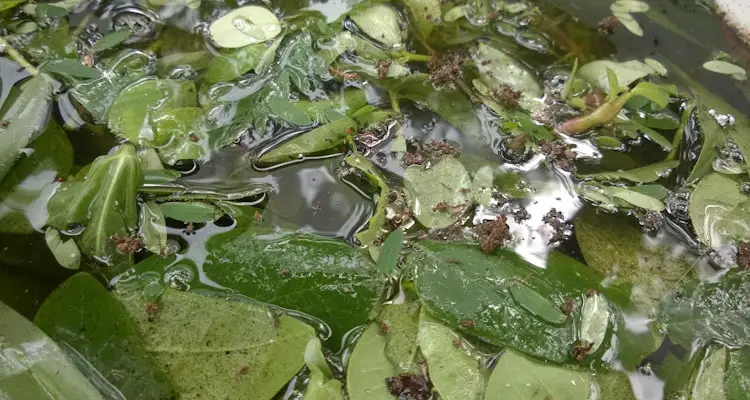
Organic farmers routinely add compost, mineral rocks, and fertilizers from plant or animal remain. They claim that these inputs help replace the nutrients absorbed by the plants.
Many Natural Farmers believe that soil already contains essential nutrients but sometimes lacks the means to unlock them. As a result, they focus on creating suitable conditions for microorganisms to thrive.
Thanks to methods such as JADAM Organic Farming, many organic farmers now also use microorganism solutions on their farms. In some cases, they experiment with concoctions such as Jeevamrutha to replenish microbes in the soil.
2. Use Of Chemicals And Pesticides
Both Organic Farming and Natural Farming focus on preventing pests rather than using harmful pesticides. However, this does not mean that no chemicals are used.
Natural Farming prohibits the use of chemicals, unlike Organic Farming which has a list of approved chemicals considered safe for humans and the environment. Most of these chemicals come from organic sources or naturally occurring minerals but may undergo processing.
You can purchase Certified-Organic Pesticides or make them using techniques taught in JADAM Organic Farming. These Natural Pesticides provide an affordable alternative for Organic Farmers.
Natural farming practitioners rely primarily on plant diversity, adequate spacing, and pruning to control the pest. However, natural repellents and pesticides made from plant extracts are also acceptable, provided they are made on-site from locally sourced materials.
I was not surprised to learn that many organic farmers now use more botanical extract solutions. However, most farmers still have to purchase these solutions to ensure they comply with the regulations.
3. Cost Of Materials And Inputs
I’m sure you’d agree that many people consider organic products a luxury. The price of these items is significantly higher when compared to conventionally grown alternatives.
The material and procedures used to create organic farming inputs need to meet specific certification standards, resulting in additional costs to customers. In contrast, natural farming insists that farmers use locally sourced materials and simple methods to create their own inputs.
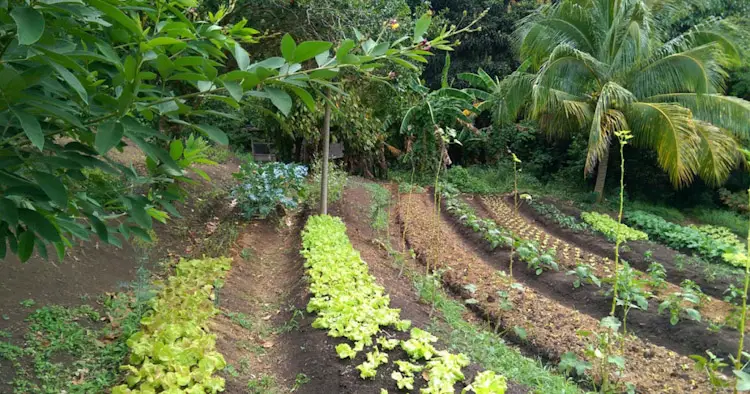
Due to quality control and testing, organic inputs produce predictable results. You can usually see a breakdown of available nutrients and minerals on the packaging. This information allows farmers to make informed decisions.
Natural Farming Keeps costs to a minimum by using ingredients available locally. However, the quality of inputs can vary considerably based on the skill of the practitioner and the ingredients used. This may result in sporadic results until the practitioner gains the necessary experience.
In the past, the cost of the various amendments made organic farming better suited for garden enthusiasts and large commercial farms. However, thanks to organizations such as JADAM Institute, farmers now have affordable options.
4. Tillage Of The Soil
Many organic farmers now use regenerative practices such as no-till to maintain soil structure. However, this practice is more of an exception than a rule.
Organic farming guidelines do not object to tilling as part of soil preparation. In fact, many commercial organic farms routinely cultivate the soil, mixing in compost and other soil amendments during the process. In contrast, tilling is not permitted in Natural Farming due to its destruction of the soil food web.
As an organic farmer, you need to ensure minimal environmental impact. If you choose to till the soil, you also have to take necessary actions to prevent excessive evaporation and soil erosion.
Initially, Natural Farming practitioners can till the soil but avoid creating unnecessary disturbances after the system is established. Instead, they build the soil by adding organic matter and microorganism solutions.
Many commercial organic farmers have started to adopt no-till techniques in recent years. This is a welcomed development but somewhat blurs the line between Organic and Nature Farming.
5. Management Of Weeds
Many people are concerned about reports linking severe illnesses to common herbicides used on commercial farms. Thankfully, there are safer alternatives to managing weeds.
Organic farming uses several management practices to control weeds, including eco-friendly weedicides and synthetic weed barriers. In contrast, natural farming embraces weeds, provided they do not compete with plants for nutrients, light, or other resources, knowing that they will lessen as the system evolves.
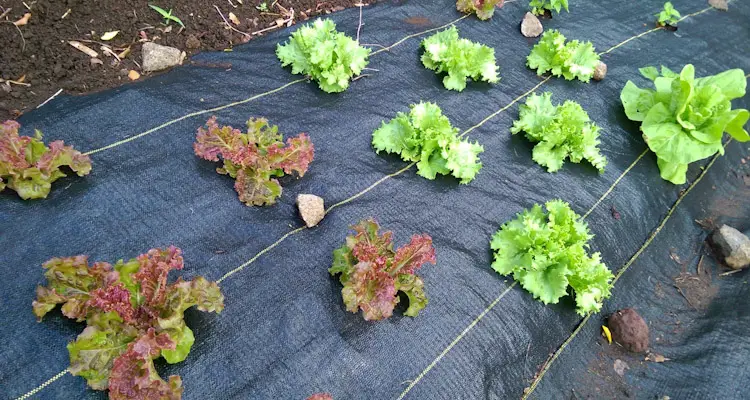
A quick internet search results in multiple companies providing organically certified herbicides at a premium price. This has led many practitioners to resort to DIY alternatives or reusable weed barriers.
According to Dr. Elaine Ingham, weeds are indicators of the balance of microorganisms in the soil. It is possible to lessen weed pressure naturally by restoring the soil food web.
In some instances, it is necessary to physically remove certain plants. However, most weeds fade away as a natural system evolves.
6. Labor Requirements
Farming requires a lot of work! Machinery helps to an extent but is not suitable for all systems.
Many large Organic Farms use standard rows, allowing farmers to use machinery designed for conventional systems. These technologies lessen labor requirements significantly. In contrast, the intercropping and diverse arrangement of plants in Natural Farming makes it challenging to use specific machines.
For example, many organic farmers use tractors with detachable implements such as rotary tillers, sprayers, harvesters, etc. As a result, their fields resemble those of conventional systems.
Most Natural Farming systems do not follow a specific planting layout of standard spacing. This makes it challenging to use traditional machinery without significant modifications.
Thankfully, systems such as Syntropic Farming seek to allow mechanization to a certain degree while maintaining diversity.
7. Environmental Impact
Both Natural And Organic farming aims to provide eco-friendly alternatives to conventional, chemical-based agricultural practices.
Natural Farming aims to use micro-biology in the soil to break down organic matter and inorganic substances while creating a diverse habitat for plants and animals. Organic farming seeks to have as little impact as possible but does not actively engage in rebuilding the ecosystem.
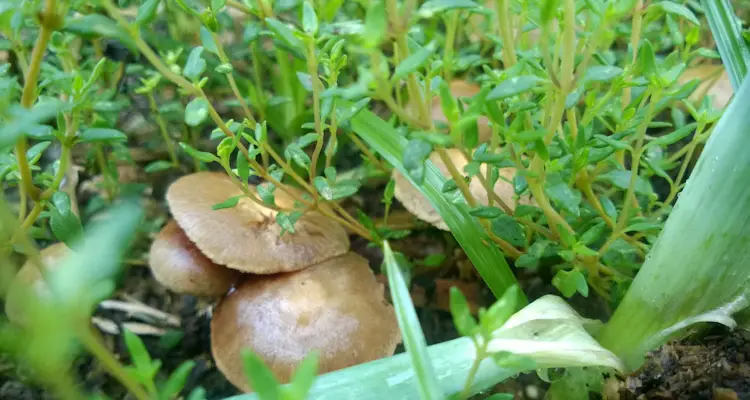
The soil on organic farms can become depleted over time, resulting in the accumulation of hard metals and mineral compounds.
In systems such as Zero Budget Natural Farming, farmers cannot use amendments sourced from outside the region. This may seem extreme, but it is necessary to protect the fragile ecosystems already under pressure from human activities.
It is important to note that the incorrect use of any soil additive can have a detrimental environmental effect. As a result, you need to be mindful of your actions, regardless of the system you follow.
8. Regulations And Certification
Traditionally, many people say “Organic” to refer to anything produced with the aid of natural amendments such as manure. However, today you need to think twice before making such claims.
Organic farming is guided by strict guidelines, which practitioners must follow to qualify for certification. Being certified allows farmers to proudly display that their products are Organic. Natural Farming has general guidelines but does not enforce specific regulations or labeling.
Many health-conscious people willingly pay a premium for organic products. The reputation of these products is carefully guarded by various Organizations, ensuring that their guidelines are followed.
In the absence of official labels, Natural Farmers provide farm tours and demonstrations and participate in farmers’ markets to establish trust with their customers. In doing so, they can communicate the benefits of their system.
While the scope of regulations may differ, each system has unique features which define its general function. These affect the look, feel, and day-to-day operations.
9. Barrier To Entry
Getting started with any farming technique requires research, experience, and money. As a result, you need to put in the effort and resources to learn.
Due to the cost, regulations, and other requirements, Organic Farming poses a high barrier of entry to anyone seeking to get started. However, it produces reliable results and is suited for commercial applications. Natural farming requires fewer resources to get started but depends on continuous observation and acquisition of knowledge.
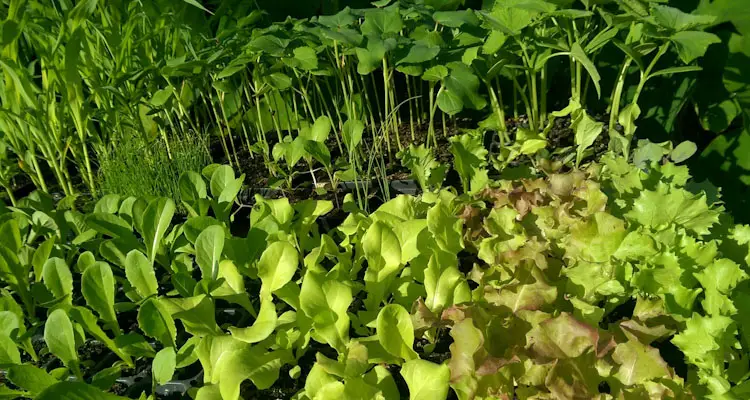
While you might have particular reasons to choose either system, in many cases, the deciding factor boils down to available resources. If you are entirely new, the cost of materials, equipment, and agriculture inputs can be discouraging.
Mr. Ernst Götsch, the developer of Syntropic Farming, emphasizes the need to learn as much as possible about the plants and animals in your system. Unfortunately, many people ignore this advice and end up wasting resources.
Thanks to online platforms, information about various techniques and DIY alternatives is available to anyone willing to seek it.
Final Thoughts
Generally, most consumers don’t really care about the differences between Organic Farming And Natural Farming, provided that the products are safer for them to eat.
As a farmer, you need to ensure that the system you choose is feasible for your target market and the resources you have at your disposal. This limitation may cause you to deviate slightly from your ideals. Still, it will allow you to make an income without significant environmental impact.
As prices of agricultural inputs and soil amendments increase, I expect to see more research into the possible use of Natural Farming inputs in organic systems. As a result, it will become more challenging to find distinctions between the two in the future.
Related Questions
Is Organic Farming Better For The Environment?
Organic farming promotes various techniques that protect soil, improve fertility and produce healthier foods. These features make it generally better for the environment than conventional, chemical-based practices. However, it can potentially contribute to damaged ecosystems if misused.
References:
USDA. Organic 101: Five Steps to Organic Certification. usda.gov. Accessed May 2022
Code Of Federal Regulations. The National List of Allowed and Prohibited Substances. ecfr.gov. Accessed May 2022
USDA. USDA Organic Resources. usda.gov. Accessed May 2022
